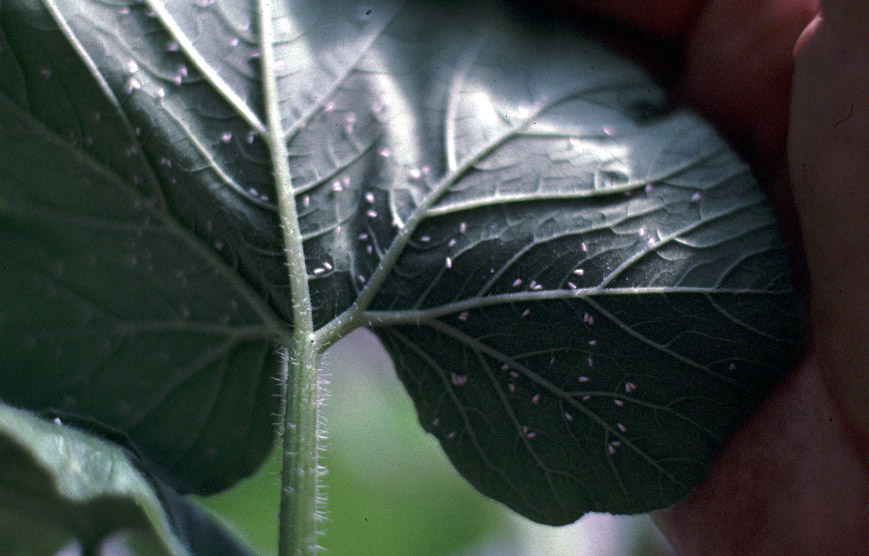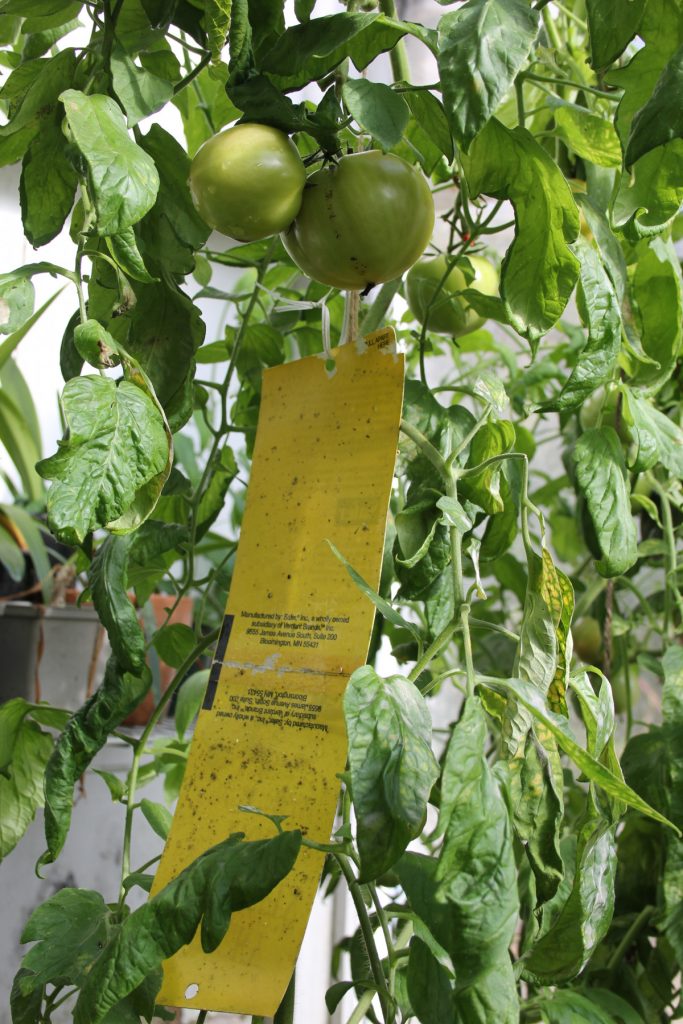
As I was moving an orange tree in my greenhouse a few weeks ago, whiteflies started flying around my head. These are one of the most common greenhouse insect pests. How do you know if you have them? Just hang a yellow sticky trap near one of your larger plants and then shake the plant. If you have whiteflies, you will see them stuck to the trap or flying around.
Getting rid of whiteflies can be a very difficult. The best solution is to remove all the plants, clean the greenhouse thoroughly, and then fumigate it. This will make the greenhouse virtually free of all insects, including whiteflies, but there’s no guarantee it will stay that way. Whiteflies come indoors on plants, so what’s to keep them from re-infesting your greenhouse?
One solution is to isolate new plants brought into your greenhouse until you know they are bug-free. To make a simple isolation chamber for a small greenhouse, use a 10- to 20-gallon fish tank with a close-fitting lid. (A pane of glass cut to fit works well.) I stand the tank on end for taller plants. Put new plants into the tank for at least two weeks before moving them into the greenhouse proper. Prior to putting a plant into the isolation tank, spray it to kill off whiteflies, wait two weeks, and then spray again to kill off any whiteflies that may have hatched in the interim.
Another option for ridding your greenhouse of whiteflies is to use beneficial insects. Encarsia formosa is a parasitic wasp that feeds on whiteflies. They can be purchased and shipped as pupae that will turn into adults, which lay their eggs inside whitefly larvae. When these wasp eggs become larvae themselves, they eat the whitefly larvae from the inside, killing them and leaving behind a black shell. The wasp larvae then become pupae and eventually adults, starting the cycle all over again. If you decide to use Encarsia formosa for whitefly control, be sure to remove all yellow sticky traps in your greenhouse, or these beneficial bugs may get stuck to them.

You might also see aphids in your greenhouse, another annoying pest. Typically, you’ll find aphids on the ends of branches where fresh, tender leaves are growing. Aphids can often be controlled by spraying with insecticidal soap or something stronger if you prefer. They do tend to come back, however. The ultimate cure, as for whiteflies, is often to empty the greenhouse and fumigate it before moving the plants back inside. Like whiteflies, though, aphids can easily be transported back into the greenhouse on new plants.
Ladybugs are beneficial insects that feed on aphids. If you buy ladybugs and set them free in your greenhouse, they’ll devour almost all the aphids. I once bought a thousand ladybugs and released them in my greenhouse. As soon as I opened the windows, the ladybugs flew out, but not before they had eaten every aphid in the greenhouse.
Keeping your greenhouse free of insects is a perpetual challenge. My preference for handling it is to use beneficial insects, even though their work may last only as long as all the windows remain closed. As with my army of ladybugs, as soon as windows and doors are opened, the good insects often fly out and the bad ones often fly in.


